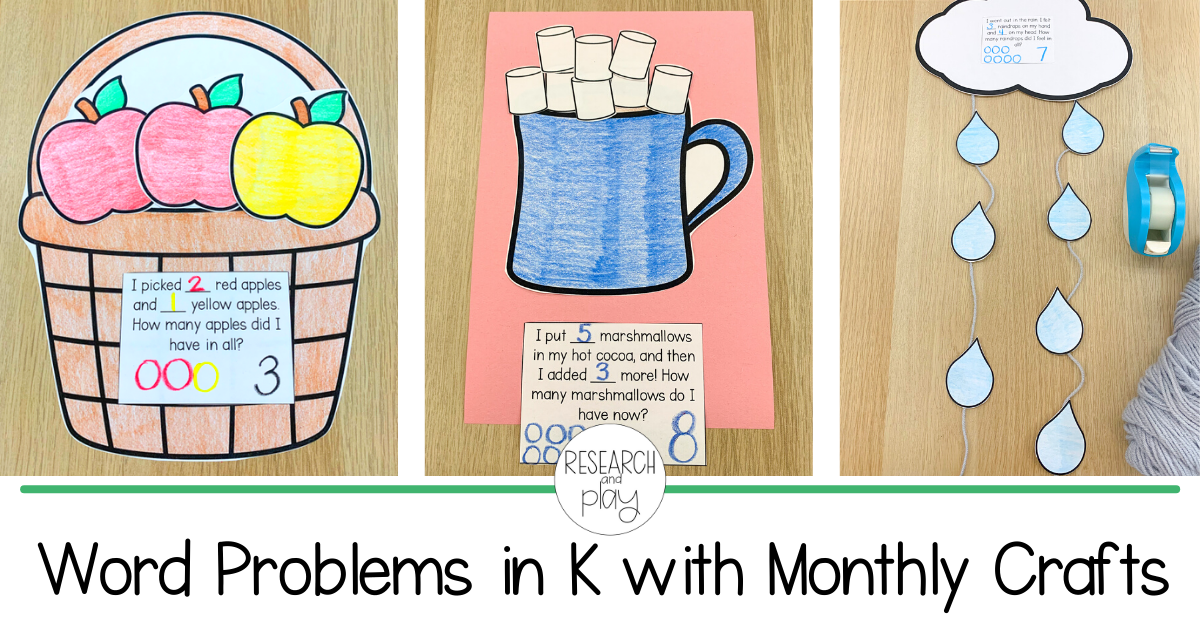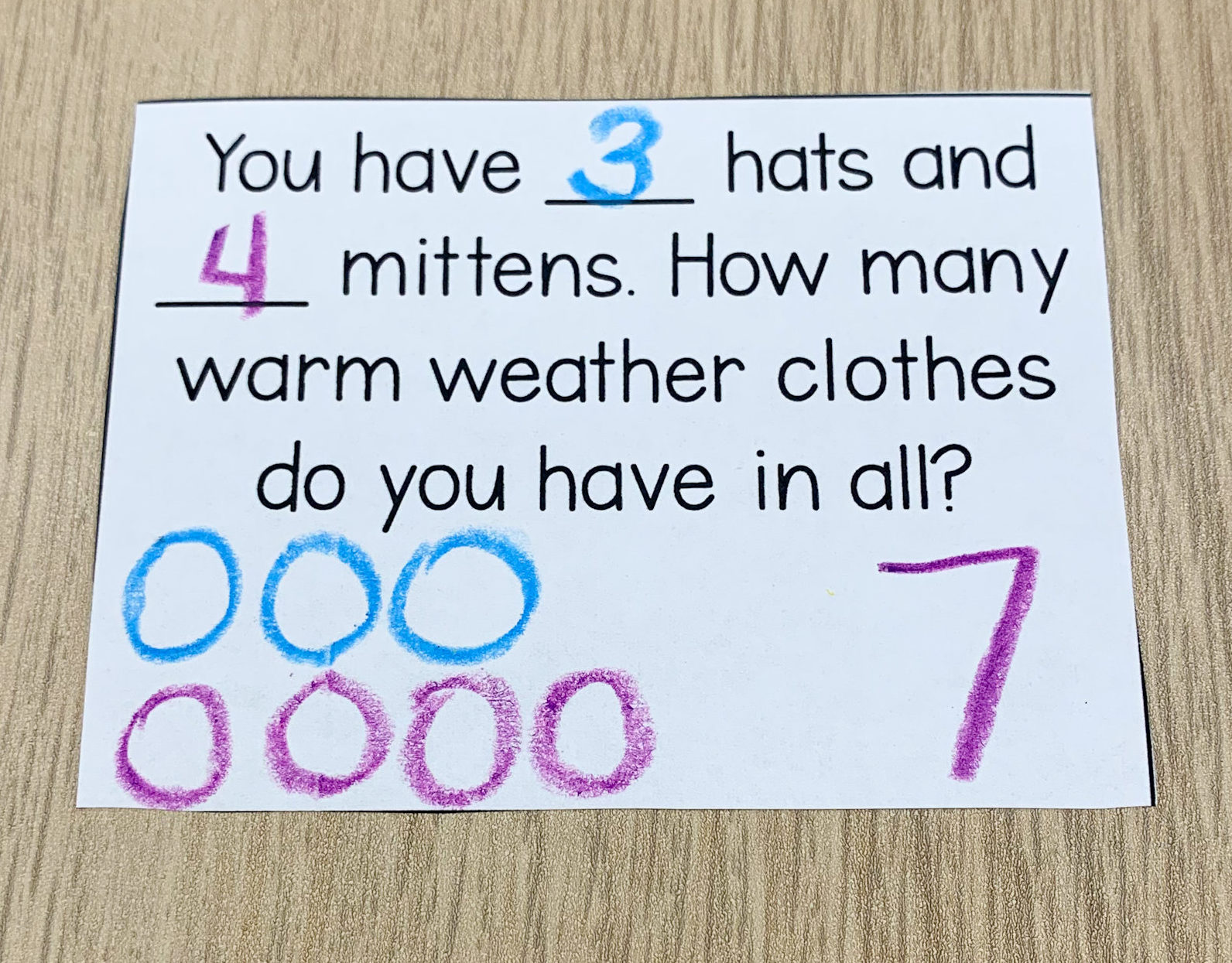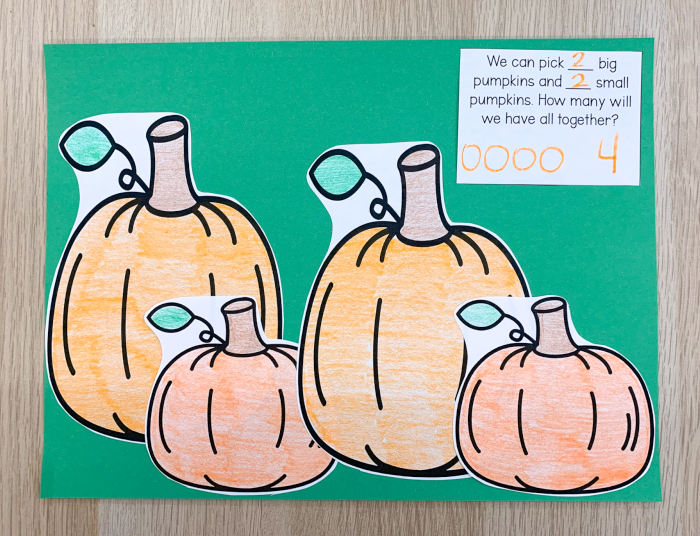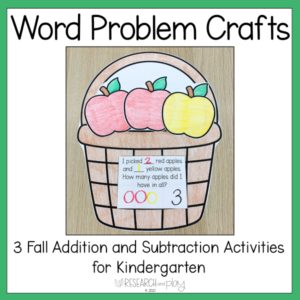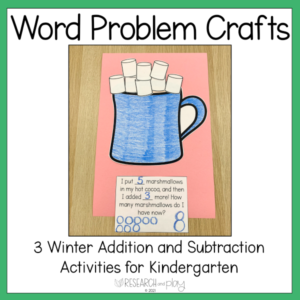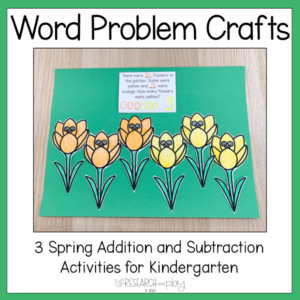Even in the beginning of the year, I practice word problems with my kindergarten students. We haven’t begun “officially” learning about addition or subtraction yet, but the process of reading through a problem, acting out the steps, and figuring out a solution is a great way to get K students thinking in terms of adding and subtracting.
Word problems, or as we call them, “number stories,” are such an easy but engaging way to get students thinking like mathematicians. When a number story is told, it gives students math in progress. I use that term when I think about how students will think about the math. In a number story, students hear that something happens, something changes, and something different occurs in the end. This “math in progress” way of thinking allows my brand new kindergarteners to attempt skills like adding and subtracting in simpler terms like “getting more, joining together, taking away, making some disappear.”
Word Problem Steps
Early in the year (September-November), the steps that we follow to work through our number stories looks similar. I do a lot of guiding during this phase for a few reasons. Most of my students are not yet able to read the problem independently, so I read it aloud. As we first get into thinking like mathematicians, I ask guiding questions to focus their thinking. Once we begin thinking about each part of the number story, I model the math to show my students how they can attempt to solve the problem.
Read the problem
I read the problem to the class under our document camera. Where there are blank spaces, I don’t read anything. After reading, I say, “Let’s figure out what happened first.” We talk about the first action, then I ask, “What changed?” We talk about the second action, or the change. Early on, all of our problems are result unknown, so the change is given. Last, I ask, “So what happened in the end?” This is when I say, “We don’t know what happened because we don’t know how many! Let’s choose some numbers.”
Act it out
This is one of the best parts! I’ll choose one or two students to help me act out the problem. If we have props or other things that are easily accessible, I’ll grab them for us to use. Otherwise, we pretend! If someone is picking apples in our story, we get our pretend bucket and start picking our pretend apples! I make sure to point out each step of the story as they act it out, modeling my math thinking: “So I noticed that she had 3 apples, but then she put 2 more! Hmm, I think that means she has more apples now then when she started.” When we arrive at the end of the number story, the students may be able to solve or may need more modeling.
Model it
Even if students solve the problem while acting it out, we always model it with a drawing. This allows the math to be seen in a more concrete way. I usually model it on the board while students model it on their own copy of the word problem. We model using circles because it’s simple and fast. If the problem says that someone has 3 apples and picks 2 more, then we draw 3 circles, then draw 2 more. To solve, I model counting the entire amount of circles. Then we would write a 5!
Craft it
While we don’t do this every time, once a month we have a word problem craft that we do to show the math happening! The craft is typically seasonal and involves lots of fine motor practice: coloring, cutting, and gluing. We love making these early in the month and displaying them in our room, usually on the yarn that runs across our ceiling. This concrete math model shows how our math skills look “in real life.” Students love seeing their math craft!
Want more?
If you’d like to grab your own set of monthly word problem crafts, click on the season: Fall, Winter, Spring! If you get all 3 sets, you’ll get 9 crafts (Sept-May) that vary in problem type, starting with addition and subtraction result unknown (a simple adding/subtracting problem) and moving to change unknown and fair share/partitive division problems as the year progresses.
I love using word problems to watch my students become mathematicians. They’re so easy to differentiate, and the use of crafts and fine motor practice make these an all-around great tool!


